This Candy DNA model is a great way learn about the structure of DNA.
Did you know that 99.9% of the DNA of each person is the same? It’s just that tiny 0.1% that makes us all different! Isn’t that amazing? Humans also share 60% of their DNA with fruit flies which is even more incredible!
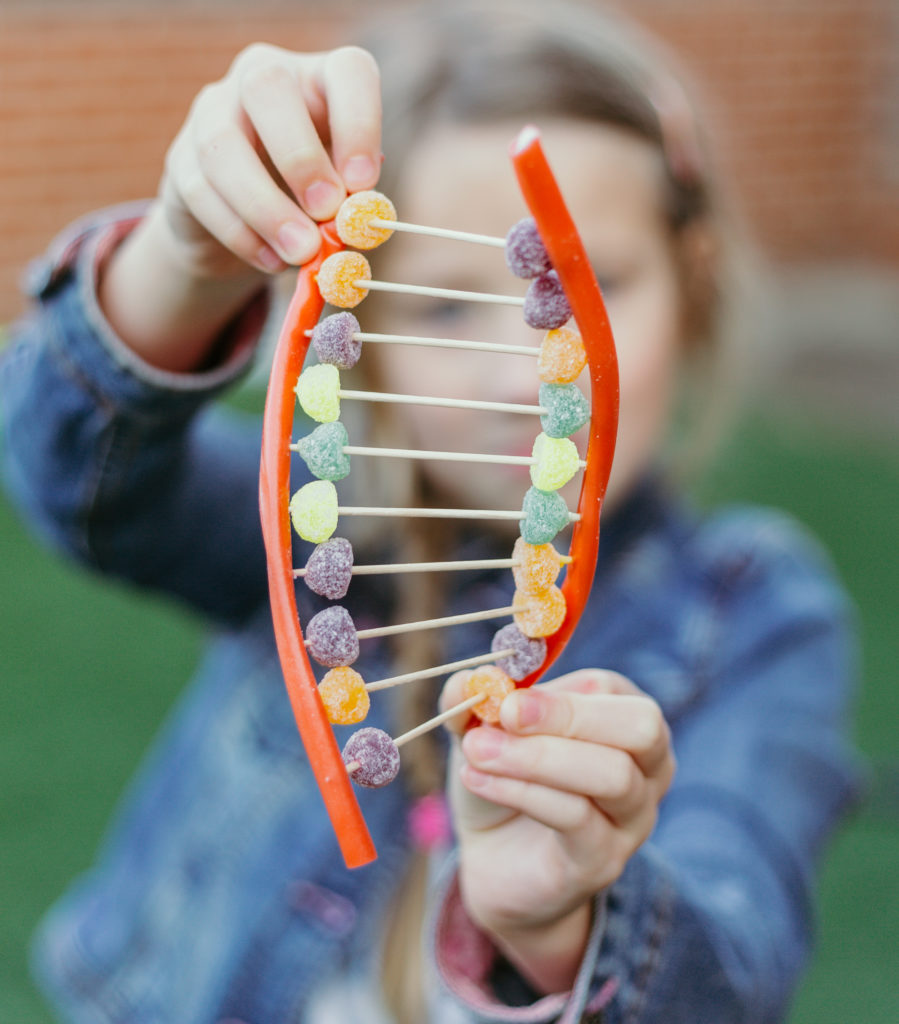
Image taken from Snackable Science
Who discovered the structure of DNA?
James Watson and Francis Crick along with Maurice Wilkins and Rosalind Franklin discovered the structure of DNA in 1953. Before this groundbreaking discovery scientists knew that DNA carried genes which parents passed onto their offspring but didn’t know how it worked or what DNA looked like.
Rosalind Franklin produced x-rays which were central to this amazing discovery, although her contribution wasn’t acknowledged until after Crick, Watson and Wilkins received their Nobel Prize.
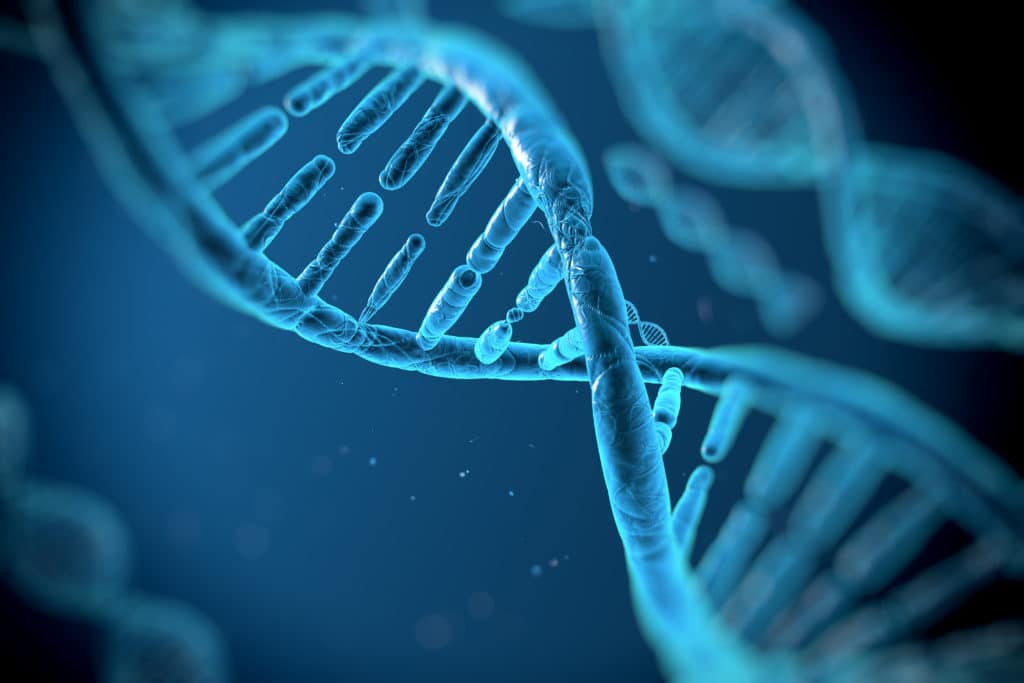
What does DNA stand for?
DNA stands for deoxyribonucleic acid, it’s a long thin molecule a bit like a recipe containing instructions or code which tells cells how to behave and grow.
What is DNA made from?
DNA is made from nucleotides. There are four different nucleotides: adenine, thymine, cytosine and guanine. We call these bases and usually refer to them by the first letter of their name.
A pairs with T and G with C.
Why is DNA shaped like a double helix?
DNA consists of a 2 backbones holding together the nucleotides. The two backbones twist together giving a double helix shape with the two strands held together by hydrogen bonds between the base pairs.
How does DNA replication work?
DNA can copy itself by separating a bit like a zip. The newly unpaired nucelotides attract new partners building two new identical helices.
What is a gene?
A gene is a set of instructions held on a string of DNA telling a cell how to make a specific protein or enzyme molecule. The set of instructions ( or code ) is made up of codons. A codon is set of 3 nucleotides. For example a string of codons could look like this:
GAC ATC GGA AAT
Genes carry information that determines your traits ( features or characteristics that are passed on to you by your parents ).
The DNA in a gene provides instructions for making proteins which are the building blocks of everything in your body. Proteins help bodies to grow, develop and stay healthy.
What is an enzyme?
Enzymes speed up chemical reactions.
What is a chromosome?
Chromosomes are found in the nucleus of cells and are made from very long DNA molecules.
Human body cells have 23 pairs of chromosomes.
What is a genome?
All the genetic information in an organism is called its genome. You might have heard of the Human Genome Project which aimed to sequence the entire human genome using DNA from several people to find an average sequence. The project was finished in 2001, but scientists are still working to identify single genes.
How to make a DNA model
We’ve been busy creating very simple DNA models using sweets.
What you need to make a candy DNA model
Liquorice sticks or other long thin candy
Something soft for the bases – we used jelly tots and jelly babies chopped in half. I tried with midget gems first but they were too hard to push the cocktail sticks through. Small marshmallows would be a good alternative too.
Cocktail sticks
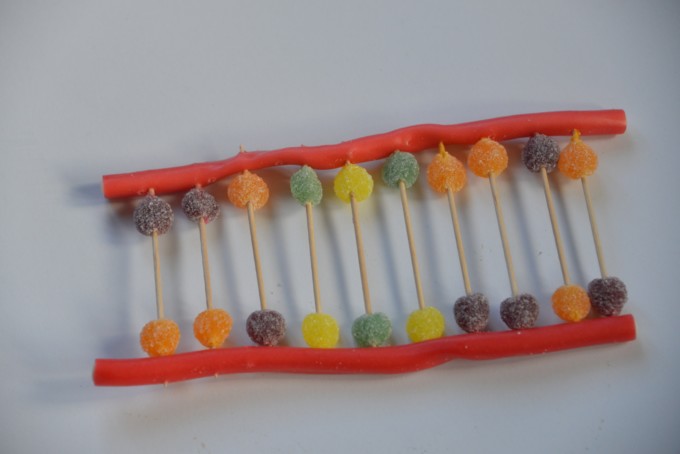
Instructions for making a candy DNA model
Remember C and G and T and A always pair up, so assign a colour to each nucleotide and add pairs of sweets to your cocktail sticks.
Attach each end of the cocktail sticks to your liquorice, spacing them evenly apart.
Once you have a long enough string, twist it to give the spiral shape of a double helix. This one is a little on the short side, so our next challenge is to make a bigger version.
What do you think of our Candy DNA model?
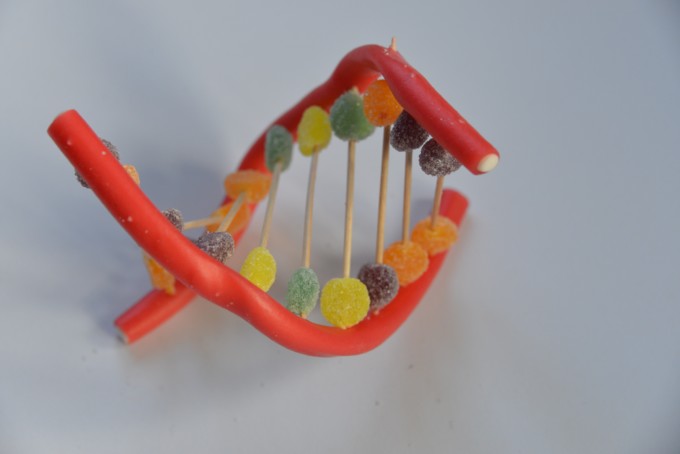
Fancy learning more about the discoveries of famous scientists? We’ve got some great famous scientists experiment ideas too.
More DNA Models
This origami DNA Model looks amazing!
These DNA models made with straws and tape look fantastic too!
If cell biology is your thing we also have a cool jello plant cell model.
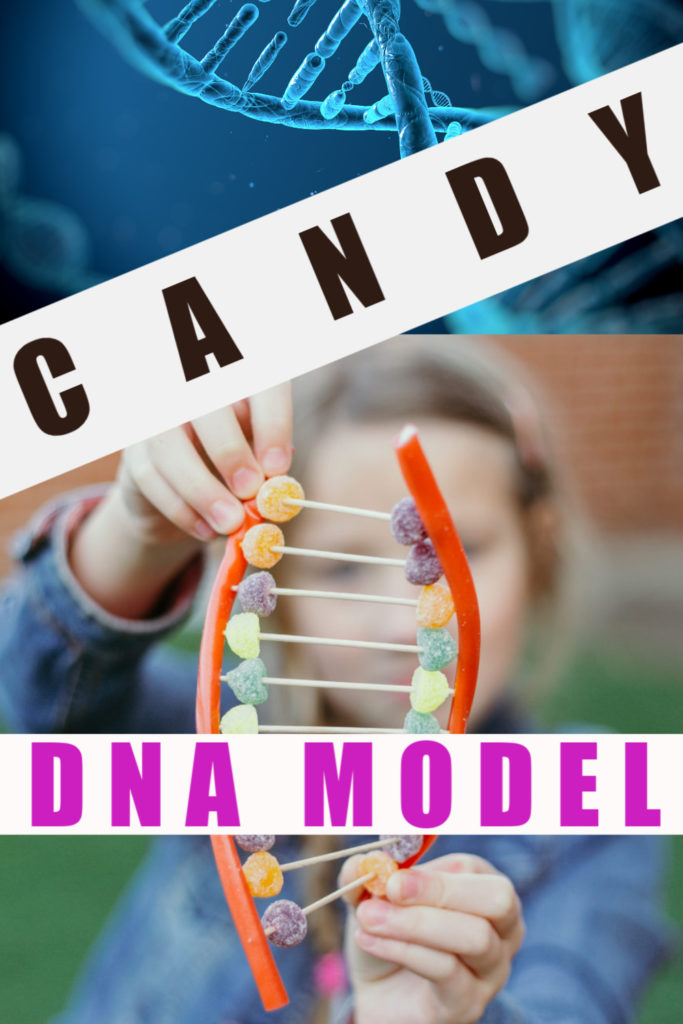
Last Updated on January 26, 2022 by Emma Vanstone

Leave a Reply